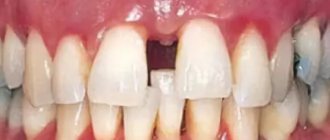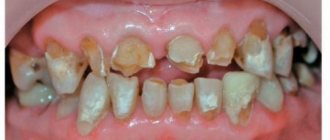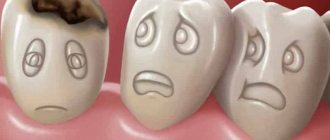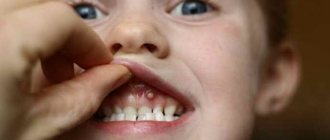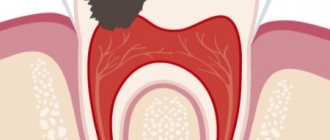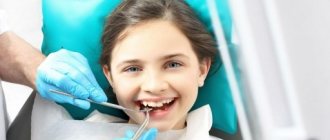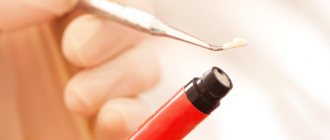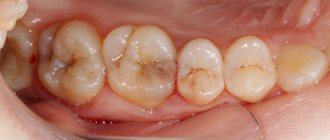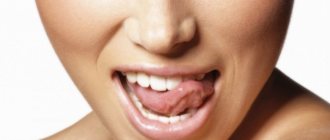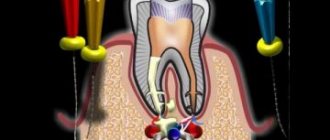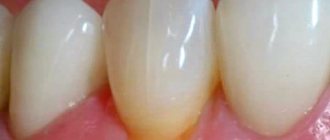Crooked teeth are a huge problem for many people. Not everyone can boast of beautiful teeth. Most often, dental problems begin in childhood, when baby teeth fall out too early and permanent teeth begin to grow “strangely” and unevenly. Teeth that are positioned incorrectly can distort facial features and aggravate speech impediments. Find out where Prius defects come from and why teeth are sometimes crooked.
Crooked teeth and malocclusion can have many causes. It is usually a combination of environmental and genetic factors.
Teeth have a huge impact on the health and appearance of the face. Teeth, broken and uneven, create huge problems. They can cause pain, pressure and changes in facial features. The important thing is that they are difficult to clean properly. This leads to the fact that over time, caries and gum disease begin to develop in these places.
Bite defects clearly change the appearance. A receding or protruding jaw makes a person look unnatural (for example, an overextended chin or two chins). It can cause speech impediments and make it difficult to eat, drink and breathe. This is also the cause of huge complexes and low self-esteem.
When there is no room in the jaw for teeth, they grow in the wrong places and at the wrong angle - they "squeeze in" where they can.
Where do crooked teeth come from?
Teeth can become distorted for many reasons. In principle, primary crowding and secondary crowding are distinguished. The first option occurs in childhood, the second - in adults.
Primary crowns occur in childhood with the permanent replacement of baby teeth. A common cause is loss too early, which prevents the permanent teeth from developing into the correct anatomical location because adjacent teeth tend to move into the empty space after the tooth being removed.
Another reason for primary crowding is that baby teeth do not fall out when the time is right. When a baby tooth becomes loose and needs to be removed, but for some reason it doesn't, the permanent tooth tries to grow in another empty space. This leads to the appearance of a new tooth next to the milk tooth.
Secondary crowding occurs in adults who have permanent teeth. The main, most common problem is that figure eights pressing on the remaining teeth in the arch and pushing against each other cause crowding because they force the other teeth to move. Elimination of figure eights can also cause bone inflammation, erosive defects and cysts.
Another cause of secondary crowding is tooth loss. When one of the teeth is missing, the opposite tooth from the jaw, in the absence of an antagonist, begins to leave the bite plane and migrate to the empty space (Hodon's symptom). To prevent this, immediately after losing a tooth, get a bridge or implant and “cover” the empty space.
It is worth noting that secondary spread also occurs in people who did not wear retainers after orthodontic treatment. Lack of continuity of treatment leads to the fact that teeth will tend to return to their previous places.
Malocclusion depends on many factors. Many of them can be eliminated in childhood to prevent the development of the defect. Regular visits to the dentist will ensure that some problems are diagnosed more quickly. Early and more effective treatment is also possible at an early stage. Adults who struggle with malocclusion usually must undergo treatment for a long time, and not always with great results.
How to correct crooked teeth in adults and children
The decision about which method of correcting crooked teeth is suitable for a particular patient is made by the dentist, taking into account:
- The age of the patient - the younger the person, the easier the dentition can be corrected.
- Number of curved units.
- Degrees of tooth curvature.
The most common methods for correcting crooked teeth are:
| Patient age | Optimal straightening techniques |
| Children from seven to twelve years old | Trainers, plates with adjustable arches, hardware methods for correcting the masticatory muscles. |
| Teenagers from thirteen to fourteen years old | Braces systems, orthodontic aligners. |
| Adults | Braces systems, orthodontic aligners, crowns, veneers, methods of artistic restoration. |
Trainers and plates with adjustable arches
With the help of these structures, it is easy to correct crooked teeth in young children, when there are still ample opportunities for corrective effects on the dentofacial apparatus. Such devices can:
- Correct lower and upper crooked teeth.
- Eliminate defects in the shape of the jaw.
- Properly train the chewing muscles.
- Remove increased load from the dentition.
After the final formation of the bite, which occurs at approximately 12 years of age, the possibilities of correction are reduced, so other methods of straightening the dentition are used.
Trainers are metal structures that are placed on teeth for minor defects. Children should wear them at night and briefly during the day. The plates are made of plastic or metal and are attached to the teeth using hooks.
Bracket systems
Braces are systems consisting of small plates connected in series with each other by arches. A strong bond is formed between the plate and the tooth opposite it using a special glue. Braces can be made from:
- Metal.
- Ceramics.
- Sapphira.
Braces are very effective compared to other methods of correcting curvature. Such designs can be used to treat very crooked teeth.
Orthodontic aligners
These removable structures are made of durable plastic that presses on crooked teeth in the desired direction. Correcting the dentition with the help of mouth guards is only possible in children; adults can use them to consolidate the results obtained with correction by other methods.
Mouthguards can be made individually based on an impression of the dentition. Patients note that they are comfortable to wear, and getting used to individual designs is faster. You can also purchase universal thermoplastic mouth guards; they are less comfortable, but cheaper.
Prosthetics and microprosthetics
Adults can correct crooked teeth with dentures and microdentures. In the first case, crowns made of metal-ceramics, ceramics or metal are placed on crooked teeth. In the second case, the tooth is covered with an overlay - a veneer. The use of both techniques requires partial grinding of the enamel.
Unlike many other correction devices, which are removed after achieving the desired effect, veneers and crowns remain in the oral cavity forever, and if they break, they can only be replaced with other types of prostheses.
Artistic restoration is similar to a filling, with the help of which a defective tooth surface is corrected. This method cannot correct the position of an incisor, canine or molar, and the material used for restoration can be destroyed by aggressive food components, change color and become noticeable.
If a child has at least one tooth crooked, parents should provide him with timely help, because after this the neighboring teeth may begin to crook. In modern dentistry, crooked teeth are corrected using different methods. If the defects of the dentofacial apparatus are very extensive and affect many structures, the problem can be solved surgically.
What affects malocclusion?
- Mouth breathing usually occurs in children whose airways are blocked for some reason (allergies, sinusitis, clogged nasal cavities, bent nasal septum). The problem can lead to malocclusion - a narrowing of the jaw.
- Incorrect position and function of the tongue is an important factor influencing the formation of malocclusion. The tongue must exert pressure on the roof of the mouth because then it has the ability to activate all the associated muscles. The correct position of the tongue is hampered by a shortened sublingual frenulum and a narrowed dental arch of the jaw.
- The position of the lips and, in principle, the situation when the lips do not touch each other at rest, affects the formation of malocclusion. This occurs due to weak strength and tension in the muscles surrounding the mouth (or orbicularis muscle).
- Swallowing dysfunction is a physiological disorder that occurs when the tongue is between the teeth rather than with the palate when swallowing. The act of swallowing additionally involves the muscles of the cheek and chin, which now exert pressure on the facial bones, as seen after the characteristic grimace. This anomaly also contributes to the formation of malocclusion.
- Bad habits such as thumb sucking or using a pacifier for too long or too often can prevent the bite from developing.
- Tooth decay in children often leads to premature loss of primary teeth and is therefore one of the most common causes of malocclusion. Tooth loss causes teeth to migrate next to the space created. This can result in no room for the high-lying permanent tooth and may become lodged in the bone or appear outside the arch.
If certain abnormalities are not recognized or ignored early in a child's development, malocclusion may develop.
Why do children and adults have crooked teeth?
Dentists say that the majority of the population has some degree of tooth curvature. For some, the defect is invisible to others and does not interfere with the person himself; for others, it immediately catches the eye and complicates speech. The irregular structure of the dentofacial apparatus is divided into several types:
- There is a separate crooked tooth that has an atypical location and shape.
- The dentition is formed incorrectly due to the abnormal arrangement of several teeth.
- The jaw itself has an abnormal structure, so the teeth close incorrectly and the bite is distorted.
Photo: severely crooked teeth
Causes of crooked baby teeth
It is important to understand why teeth grow crooked, because many provoking factors can be avoided if parents take proper care of the health of their children. A prerequisite for the development of pathology may be:
Photo: child’s crooked teethGenetic predisposition inherited from close relatives.
- Mother's illnesses during pregnancy.
- Poor nutrition of women during pregnancy and lactation.
- Monotonous nutrition for the baby, late introduction of complementary foods.
- Late adaptation of the baby to solid food.
- Vitamin deficiency, which leads to rickets.
- Diseases of the nervous system.
- Using nipples for bottles in which the hole is located in the center (and should be shifted downwards).
- Using pacifiers with a thick base (anatomically correct pacifiers that are narrowed to the base).
- Long-term use of pacifiers - more than 1 year.
- Destruction of the primary dentition by caries.
- The child switches to mouth breathing with frequent diseases of the ENT organs, when the nose is stuffy.
- Bad habits – biting nails, pens, pencils.
- Tendency to frequently bite lips or cheeks, habit of resting the tongue on the front incisors.
- Jaw injuries.
Causes of crooked teeth in adults
If primary incisors, canines and molars have grown straight, this does not guarantee the absence of problems in the future. Teeth can become crooked in an adult under the influence of the factors described above and additional reasons:
Photo: crooked teeth in an adultChronic poor oral hygiene.
- Short frenulum of the tongue.
- Dysplasia.
- Bruxism.
- The absence of one or more teeth in a row, into which neighboring dental units are subsequently displaced.
- Molars grow crowded and creep on top of each other if the formation of the dentition in a teenager is faster than the growth of the jaw itself.
- Improper swallowing, in which the tongue puts strong pressure on the front teeth.
- Thinning of the enamel of the lower teeth and their discrepancy under the pressure of the upper dentition.
Erupted wisdom teeth can distort the dentition, especially if they themselves erupt crooked and the person has a small jaw.
Who should wear an orthodontic device?
Orthodontic treatment is intended for both children and adults. Anyone who notices one of the above-mentioned irregularities or suffers from crooked teeth can opt for orthodontic appliance treatment. The doctor decides exactly what the treatment should look like and how long it will last.
Nowadays, orthodontic appliances offer the possibility of more “intimate” treatment. In addition to classic metal braces, patients can choose transparent or even implants from inside the teeth.
